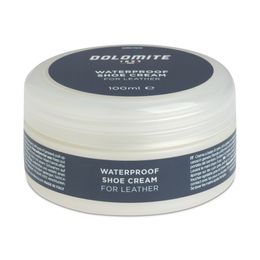How to clean full grain leather shoes
Shoes faithfully accompany us on all our adventures. We wear them every day and in all sorts of conditions and often take them off in the evening - maybe covered with mud and dirt if, for example, we have just come back from a hike in the mountains – and put them back on the shoe rack without taking care of them. Yet herein lies the secret to making shoes last a long time: maintenance and cleaning operations are essential to keeping their functional properties and quality intact over time. But what is the best way to do this?
First of all, we need to carry out some preparatory operations, which apply to all types of footwear. Let's have a look at these together:
Stage 1: Preparation
Before starting to clean footwear, we must first carry out a number of important preparatory stages, which apply to all types of uppers:

Let the shoe dry naturally, avoiding direct exposure to sunlight, heaters and other sources of heat as these could dry out the leather and plastic parts and make the adhésives gluing the sole and uppers together become unstuck.

Remove the laces and insoles to encourage aeration of the linings, making sure that these are in good condition and have no tears or abrasions, and check that the laces are not worn out.
Stage 2: Cleaning
Leather is one of the most widely used and popular materials for manufacturing footwear: it is extremely hard-wearing, durable and adapts to the foot like no other. This makes it particularly comfortable and reliable over time: a sort of long-term investment!
It is important to know however that it is a “living” material that needs to be nourished from time to time to prevent it from stiffening, which would result in cracking and the loss of its qualities.

Cleaning starts with brushing theoutside of the shoe with a soft brush to eliminate dust or dry soil residues. If any traces of dry mud remain, dampen the brush or alternatively (if available) use para rubber.

Once the surface of the shoe is clean and dry, we recommend “feeding” it with a specific cream for leather products, such as our “Dolomite” Cream. Spread it evenly over the surface with the help of a soft brush, or alternatively using an old woollen sock.
WARNING:
1) An excessive use of the cream may make the uppers too soft and deformable.
2) After applying an impregnating agent, leather goods may turn slightly darker.

Before using the shoes again, it is a good idea to leave the leather to rest for a few hours to allow the products used to be absorbed properly (after this, they can be brushed to a shine). Lastly, insert the laces and insoles again ensuring first that these are completely dry.
Stage 3: Maintenance
And last but not least, here are a few practical rules and tips that will help you make your shoes last longer. When buying footwear, it is important to remember that it is in our interest to make them last as long as possible, but it is also our duty towards the environment to ensure they don’t deteriorate before time, therefore we should look after them sustainably before and after use.

To keep our shoes in their best condition when we are not wearing them, remember to Always remove the insoles and insert some screwed up newspaper – especially into the toe – so they maintain their original shape.

We also recommend storing shoes inside their original box, covered with the tissue paper inside, in a dark, dry place where the temperature remains fairly constant.
Do you know that...

Did you know that the first shoes to set foot on the summit of Dhaulagiri, the last eight-thousander to be climbed, were Dolomite leather boots? The entire expedition, composed of an international team of mountaineers, including the legendary Kurt Diemberger, accomplished the feat way back on 13 May 1960, equipped with footwear made by hand in Italy by Dolomite. Precisely thanks to the support of these leather boots and the incredible courage and determination of the members of the expedition, a legendary, memorable page of mountaineering history was written, and much more besides.


